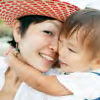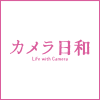Cute features unique to babies such as their tiny hands and legs and soft fluffy hair are just some of the details you wouldn’t want to miss capturing in photos. In the second article of this series, I will highlight some tips on how to take good close-up shots of babies. (Edited by: Camera Biyori, Photos by: Shino Chikura)

Get up close to your subject (but pay attention to the composition)
When photographing different parts of a baby, the trick is to get up close to the area you find adorable. By doing so, you can highlight the area that you want to present. It is also important to try out various angles and compositions and to pay attention to the entire screen so that unnecessary objects are not captured in the pictures.
Operating Mode

Program AE
Speed is very important when it comes to taking photos of babies. The safest mode to use is the Program AE mode, where the camera needs no more than an instant to calculate the appropriate exposure. The exposure compensation can be set at any value, which means that you have control over photo brightness and can adjust it as you wish.
“Tiny hand”

[Shooting Conditions]Shooting location (weather): Indoor (cloudy)Lighting condition: Indoor illuminationExposure compensation: EV+2
The shape of the hand with the fingers extended looked cute so I took a picture of it. By deliberately leaving the baby’s face out, the details of the hand stand out even more. Since a baby will not move the way you want it to, change your own position while checking through the camera to find one that will allow the hand to be seen at a suitable angle.
"Teeny weeny wrinkled feet"

[Shooting Conditions]Shooting location (weather): Indoor (cloudy) Lighting condition: Indoor illuminationExposure compensation: EV+2
The wrinkled little feet of a newborn. As babies move their feet a lot, take care to make sure that the feet are in focus. After you have taken a few shots, do hit the playback button to check if any of them are blurred or out of focus.
“Soft, fluffy hair”

[Shooting Conditions]Shooting location (weather): Outdoor (clear)Lighting condition: Illumination from the left side of the image.Exposure compensation: EV+2
This was a shot that I took when I went outdoors. With the light shining from the side on the soft, fluffy hair, I thought it was a lovely scene and captured it without a second thought. I would also recommend using exposure compensation when shooting in the presence of a backlight (where light shines from behind the subject). Although the shot was taken spontaneously, the details of the hair were strikingly beautiful because I got up close to it. As in the previous photo, the face was also deliberately left out here. When you take partial shots with a free composition, you may sometimes end up with some interesting shots.
[POINT] How do you get up close to the area you want to shoot?

Get up close until you reach the closest focusing distance
The closest focusing distance is a distance that indicates how close you can get to the subject. The approach distance varies according to the lens and this distance is indicated on the lens e.g. "0.25m/0.8ft" and so on.

Photographer and mother of two girls, one aged 4 and the other, a 1-year-old. After graduating from university, she went to Germany to study under Andre Rival and Ulrike Schamoni before going independent.

Camera Biyori is a Japanese photography magazine introducing charming photos and daily joy with cameras. Suggesting fun activities relating to cameras and photography, Camera Biyori editorial department also offer the "Camera Biyori Photography School" to recommend its readers to engage in photography and have fun.
Published by Daiichi Progress Inc.

































